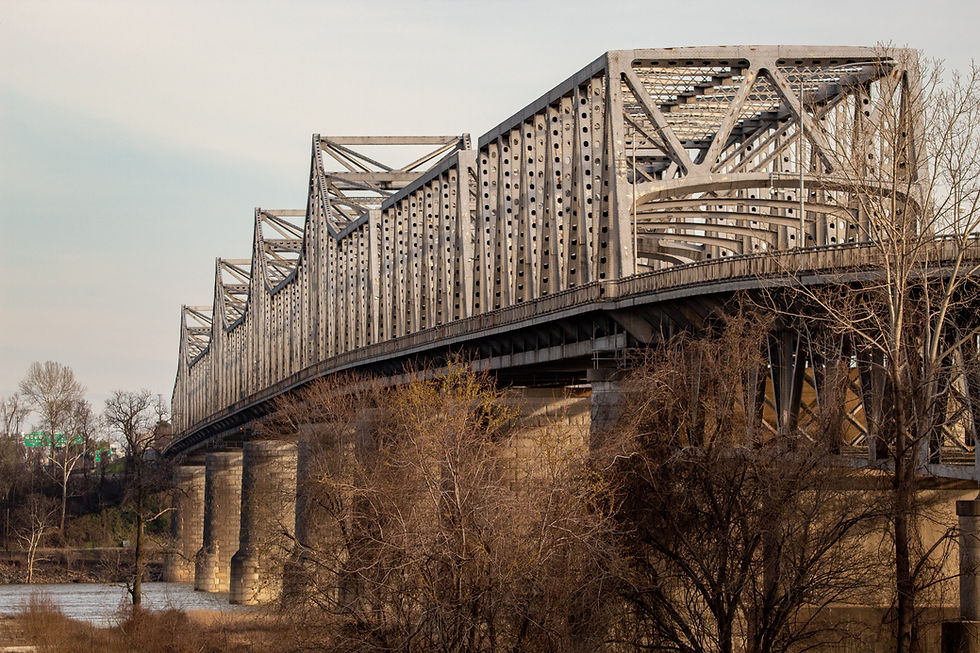Different types of Truss Structures
- Khalad Bin
- Jul 23, 2021
- 3 min read
by Khalad Bin

Introduction
Trusses are widely used in bridges, buildings, and other infrastructures. The function of a truss is to provide turgidity to the skeleton. A truss is an assembly of metallic elements (bars, rods, pipes, etc).
The elements of a truss are interdependent and exert force on one another, to survive the external load and burden. A truss is used instead of RCC and concrete beams. Trusses are of different types with regard to their designs and shapes.

Elements of Truss
Almost all the trusses are made up of three fundamental components. The chord, the bottom, and the members.
1. Upper stringer in a truss is called the chord.
2. The lower stringer of the truss is called the bottom.
3. Members, also called struts are the bars, rods, and strips that connect the chord and bottom of the truss.
Types of Trusses
Basically, there are two types of truss on the basis of their design and working mechanism.
Pitched Truss
Parallel Chord Truss
Pitched Truss:
In a pitched truss, the chord (upper stringer) and bottom (the lower stringer) are not parallel. The chord of the truss is extended outward like an arch or a cone. The extended chord of the truss provides extra strength to the truss. The pitched trusses are used in constructing roofs of the buildings, especially in the area of snowfall. The cone-shaped roofs do not allow the snowfall to dump on the roof while making the snowfall slip down from the edges of the roof.

Parallel Truss:
A parallel truss is made up of the parallel chord and bottom. The chord and bottom run straight in a parallel path. Both the stringers (chord and bottom) are interconnected by means of struts (the connecting rods). If compared, the pitched trusses are stronger than the parallel truss. A parallel truss is generally used instead of girders and beams.
Mixing both of the types the truss are further classified into the following types:
Warren Truss
Octet Truss
Prat Truss
Bowstring Truss
King post Truss
Lenticular Truss
Town’s Lattice Truss
Vierendeel Truss
(1). Warren Truss:
It is a very simple type of trusses, in which the truss members form a series of equilateral triangles. These are included in the category of the parallel truss.


(2). Octet Truss:
In this type of trusses, the truss members are made up of all equivalent equilateral triangles. This is a very complicated truss, in which each triangle is associated with the other in multi-dimensions. This type of truss is strongest as compared to the rest of the types. This type of trusses is designed with very high skill and is very difficult to understand.

(3). Pratt Truss:
In 1844, the engineers of the Boston railway track designed it. Two types of members are used in this truss. One is vertical and the other is a diagonal member. The two types of members consecutively, follow one another. The vertical members are for compression and the diagonal members are for responding tension.

(4). Bowstring Truss:
Bowing Strings are used in this type of trusses. The bowstrings act as an arch. These strings give extra turgidity to the truss. These were, first used in World War II. The need for such types of trusses was felt, the curved roof of aircraft was to be designed.

(5). King post Truss:
In this type of trusses, two angled members/struts support a vertical strut. It is very simple to design but frequently used truss. In this design, the vertical member/strut is called Kingpost.

(6). Lenticular Truss:
Lenticular Truss was, first time used in the Gaunless Railway bridge of Stockholm and Darlington in 1823. In this type, the chord and the bottom, are arched and connect with each other at both ends.

(7). Town’s Lattice Truss:
In these trusses, the inclined members are used which cross over one another at frequent points. An American architect “Itheal Town” designed it, this is why is known after his name.




